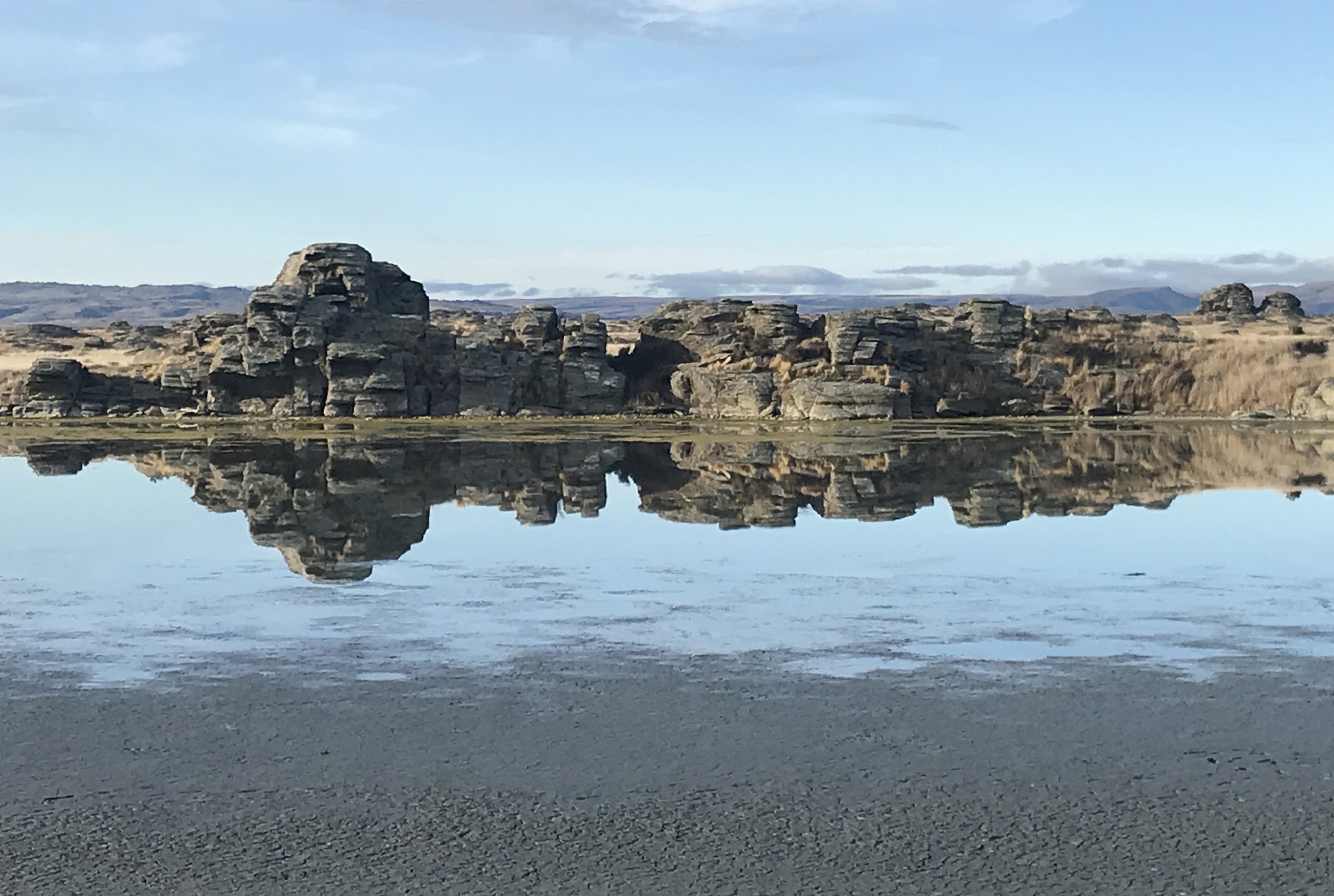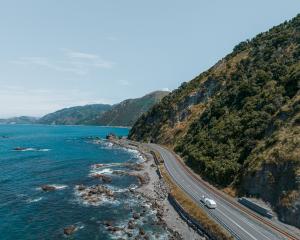
Gillian Vine visits a unique natural attraction near Dunedin that would make a great day out during the school holidays.
There's just one inland salt lake in New Zealand, an Otago landmark near Middlemarch.
Sutton Salt Lake is special, not just because it’s our only one but because such landlocked waters are usually found in arid continental regions, as for instance Utah’s Great Salt Lake.
On the world scale, ours is a tiddler, covering less than 2ha, but it’s nonetheless a fascinating and peaceful spot. On a recent Saturday, I saw only four other visitors ambling along the grass path encircling the lake, a gentle walk which took me about an hour, as I kept stopping to take photos.

What’s more, in summer there may be no water at all, just a mosaic of mud in crazy-paving patterns, as heat and wind evaporate the moisture.
This unique geological oddity came about because the dip between the rocks has a schist base, enabling rainwater to gather. That’s only part of the story, as the water is strongly alkaline, the pH level bobbing up and down, depending on how much water there is.

During the moa-hunting period, Maori crossed the Strath Taieri Plain en route from the coast to Central Otago. A cave burial site, containing a Maori woman and child, was found in 1881. Elsewhere in the area, stone tools, weka and dog-skin garments, flax sandals and wooden bowls have been found, many of them now held by the Otago Museum.
Travelling from the coast to Central Otago in their quest for gold in the 1860s, Europeans took a similar route to Maori, but veered northwest before they reached the lake. The Dunstan Trail begins off State Highway 87 at Old Dunstan Rd, just past Clarks Junction hotel. Much of the route, which ends at Moa Creek, is suitable only for 4WD vehicles and is closed during winter.

It’s a fun place for kids to explore and look for Maori artefacts awaiting discovery among the rocks: should you stumble on any, do not disturb them in any way but contact the Department of Conservation.
Take a picnic or head into Middlemarch if you crave a coffee after a lake visit, as there isn’t a water tap for the thirsty visitor.
There are no loos onsite, either. Having seen a man pop behind a rock and emerge doing up his zip, I’d like to see Doc add toilet facilities in the car park area, but that’s a small niggle.
Getting there
From Outram, take SH87 and at Sutton, just before Middlemarch, turn left into Kidd’s Rd. The entrance to the reserve is on the left, about 2km along the gravel road. There is ample
parking on grass inside the gates.












